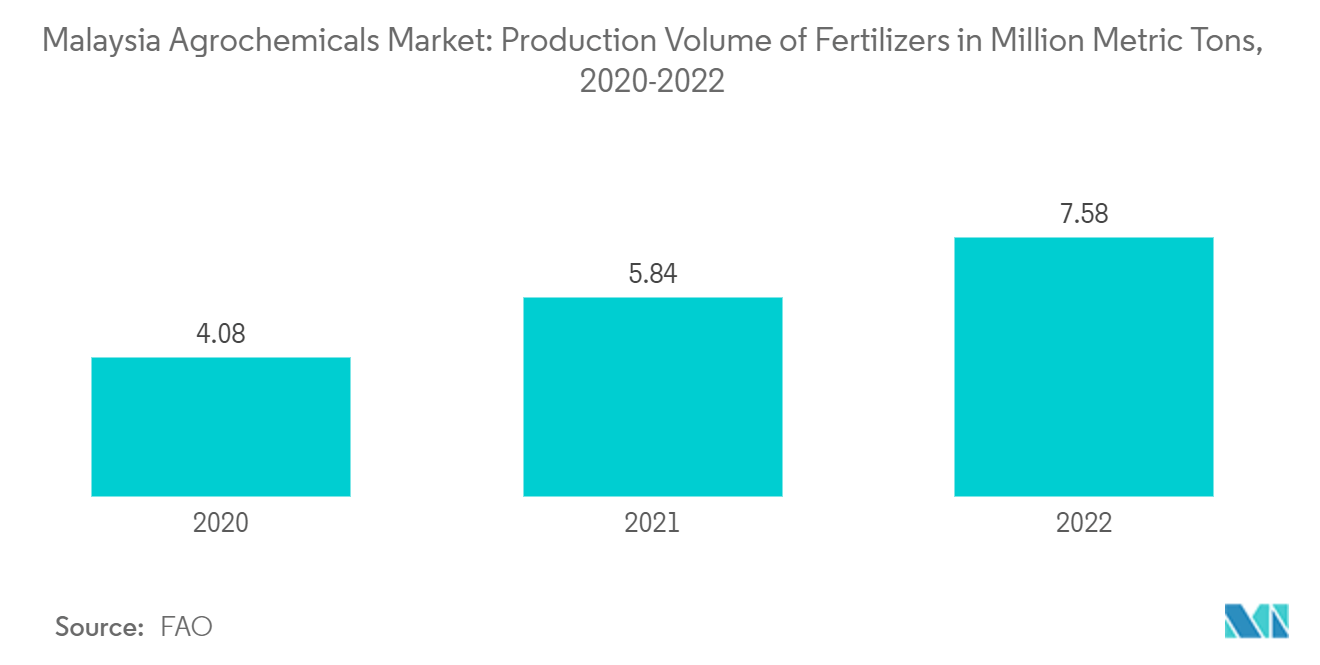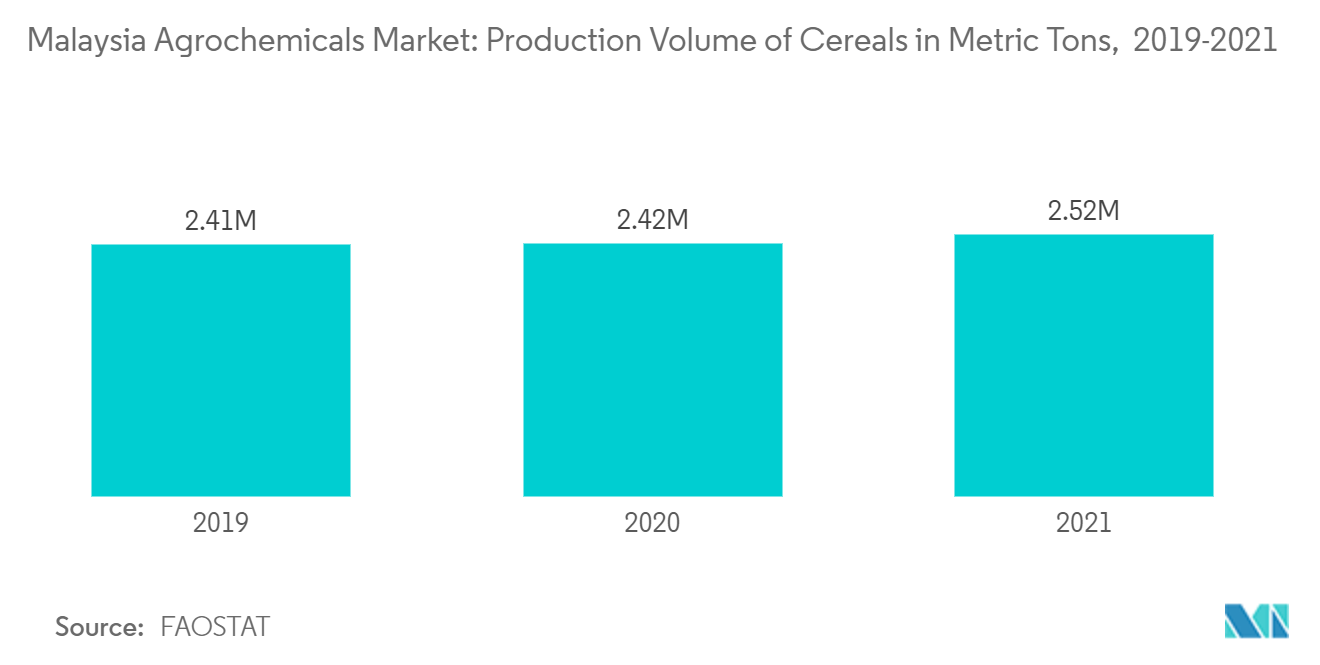Market Trends of Malaysia Agrochemicals Industry
Fertilizer is the Largest Type of Agrochemicals
Fertilizers enhance the quality of crops by supplying necessary nutrients to both the crops and the soil. With a growing population putting pressure on food production, increasing agricultural output on current farmland is essential to meet the country's food needs. For instance, the population of Malaysia rose from 32.3 million in 2020 to 32.7 million in 2021, leading to a higher demand for food. Proper and judicious application of fertilizers plays a crucial role in meeting the food needs of the expanding population in the country by maximizing the productivity of arable land. As a result, fertilizers are crucial in the Malaysian agriculture sector, assisting farmers in enhancing both the quality and quantity of their harvests.
On the other hand, the rapid growth of the oil palm industry in peninsular and East Malaysia (Sabah and Sarawak) has led to the cultivation of oil palm in lower-productivity soils, such as hilly and inland soils, as well as more problematic soils like peat soil in Sarawak. In these challenging soil and climate conditions, along with varying cultivation methods, the use of fertilizers becomes increasingly crucial for achieving higher crop yields. According to the FAO, in 2022, 7.82 million metric tons of fertilizer were produced in Malaysia, an increase from around 4.80 million metric tons in 2020.
Furthermore, the Malaysian government has been providing support to the fertilizer industry through a range of initiatives to maintain production levels and promote the sector's growth in a sustainable and effective way. For instance, in 2022, the Department of Agriculture (DoA) introduced the Fertilizer Act to promote agriculture capacities. Additionally, the ARISE Plus Malaysia project is implemented by the International Trade Centre, which has provided a series of training sessions that have assisted the country in developing a full-fledged pragmatic registration framework for fertilizers that match Malaysia with the other ASEAN countries. For instance, according to the Department of Statistics Malaysia, the sales of fertilizers in 2020 were recorded at USD 1.00 billion, which increased to USD 1.32 billion in 2022. Hence, government initiatives are boosting fertilizer sales, which is expected to lead to market growth during the forecast period.

Grain and Cereals are the Largest Users of Agrochemicals
Malaysia is one of the leading cereal producers in the ASEAN region. Since cereal production is crucial for ensuring food security in a country, it is essential to increase production to meet the needs of a growing population. According to the Food and Agriculture Organization, the total cereal production increased by 4.2% between 2019 and 2021, reaching 2.5 million metric tons in 2021. This is mainly due to the increased usage of crop protection chemicals, which reduces the losses and increases production. This is focused on improving its domestic production to reduce its reliance on imported corn and wheat, increasing the demand for agrochemicals.
Rice is the primary food source for up to 60% of Malaysia's population and is the main crop grown in tropical regions. The production of rice is highly susceptible to a wide range of pests, necessitating the use of various types of pesticides to control insects, weeds, fungi, and bacteria. In Malaysia, 20% of all pesticides were used in paddy fields in 2020, as FAO estimated. Extreme drought and heat conditions help these diseases to grow. The existence of a high population with a serious infestation of these pests results in low rice yield for the farmers. The rising infestation of insects and diseases is driving the consumption of agrochemicals, which is expected to drive market growth.


